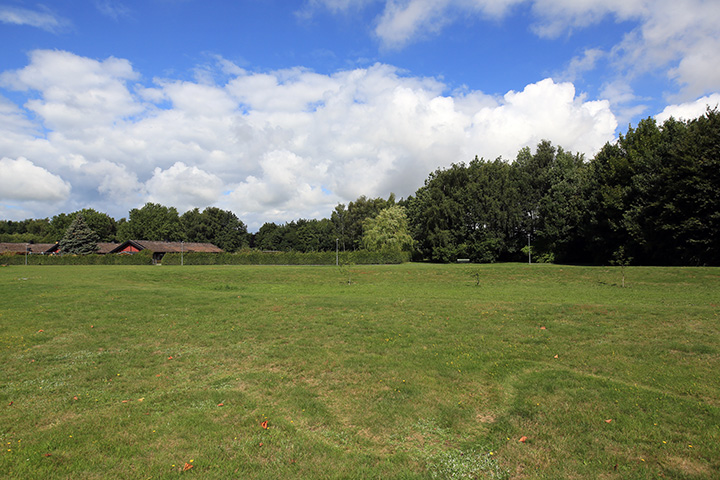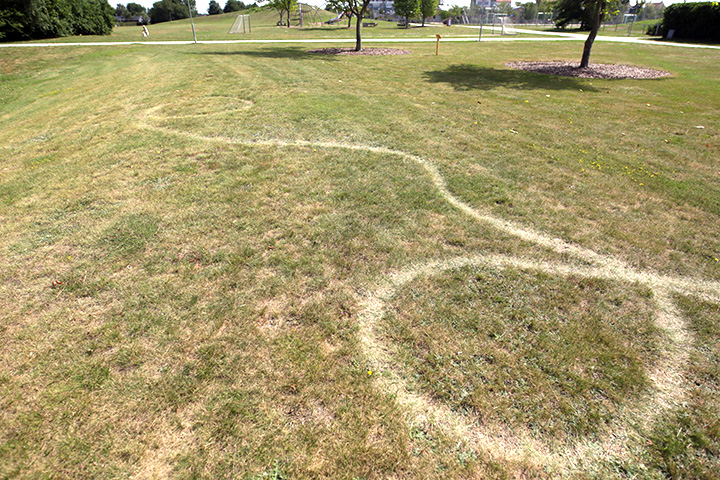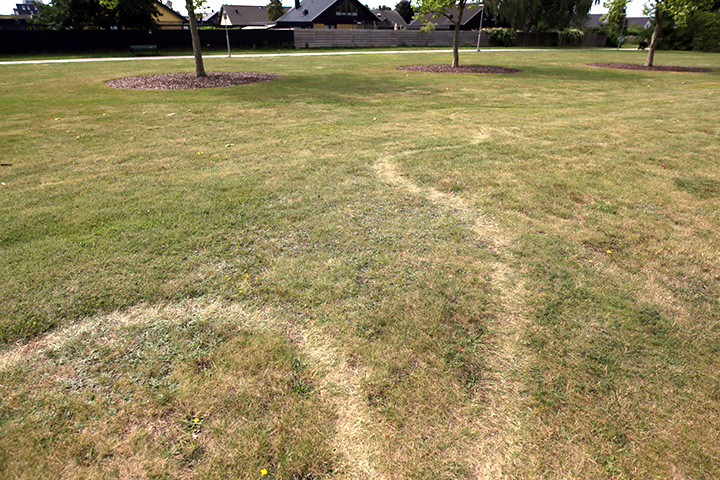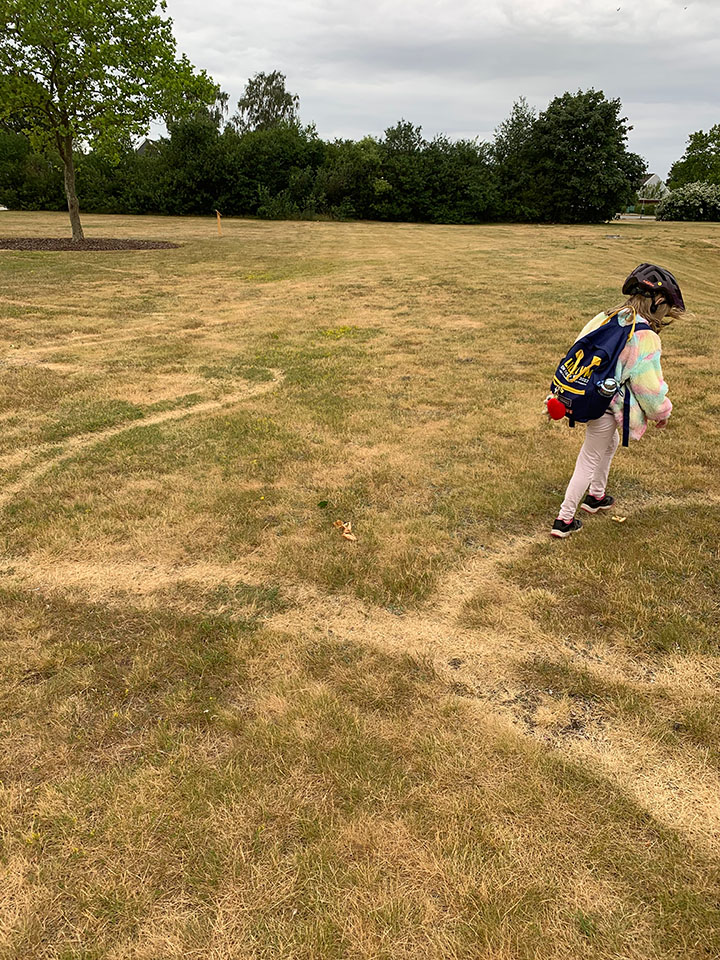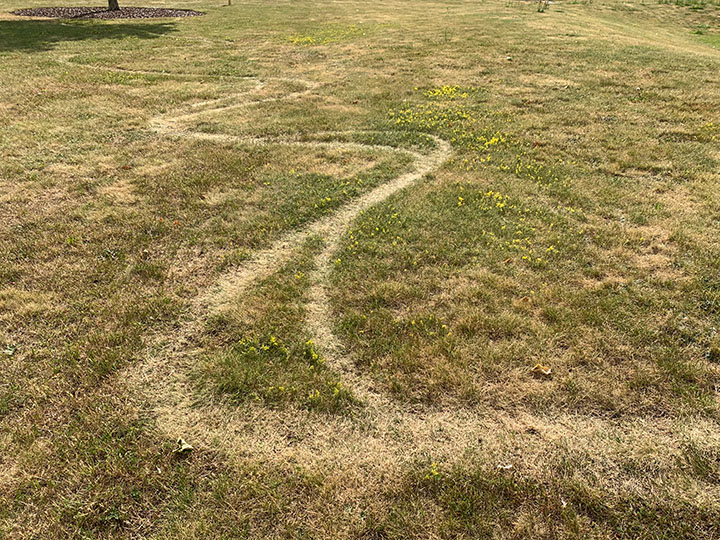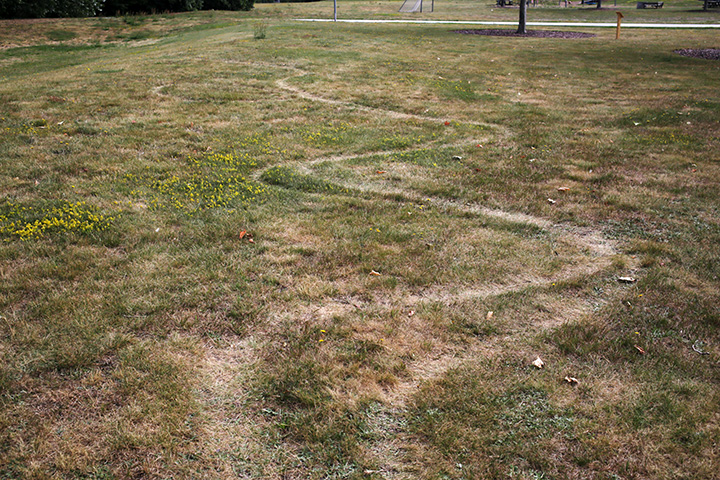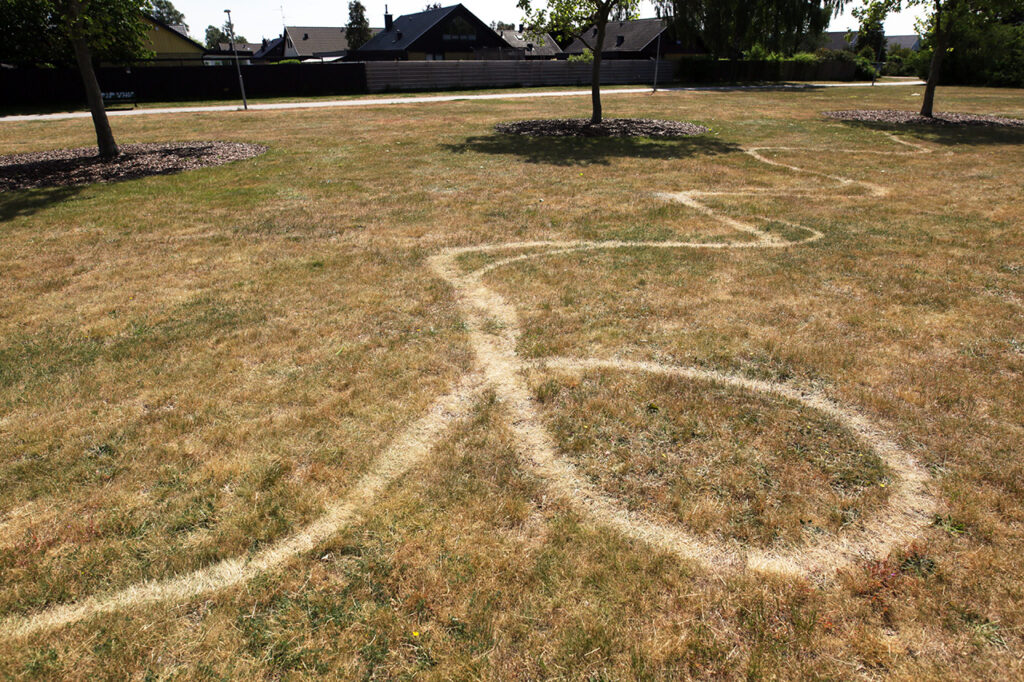About Participation.
A couple came by the other day and said that they have been walking the path many times now. They want to help to keep the trail open. I thanked them and I really appreciate their initiative. Then they said that the line is very narrow and hard to follow. I said that they can widen the path to their liking. I think I heard some hesitation in their answer. Maybe we came very close to a limit between participation and creation, if there is a division between those. Between following a line and the responsibility of shaping a line. Sure, there is a difference. But is participation limited to following some rules put up by someone else (the artist)? No, I don’t think so. So they do participate when they walk the line? Yes, they participate, they contribute to the result. Do they create? Yes, they consciously shape the path.
Maybe there is no division…
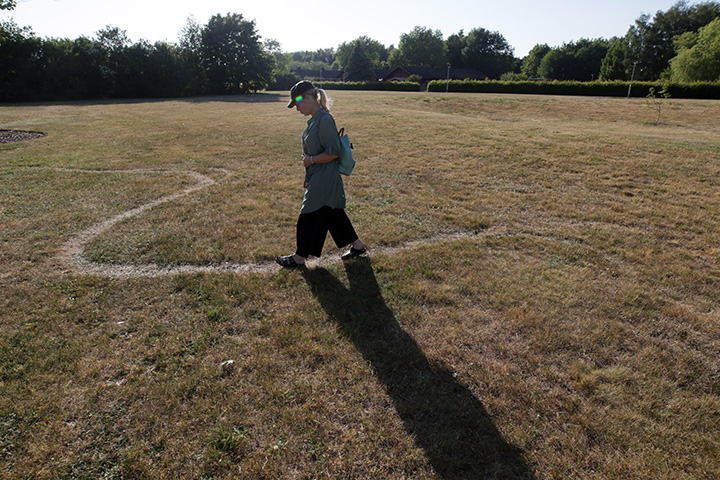
About visibility
Due to the heavy rain the vegetation is growing fast and strong. I like it when the path is just grass laying down instead of a muddy trail with grass at the sides. And I want to avoid doing unnecessary damage to the plants I step on. When I saw the site for the first time I reacted with a thought that this place needs something big. Then I realized the opposite. This place is perfect for a piece of art which operates on a more intimate scale. There is not much going on visually in the surroundings. It is almost a white box (white box = typical gallery space for art) or rather a green box if you like. So I followed that thought about making something not so visually obvious which demands some attention from its viewer.
